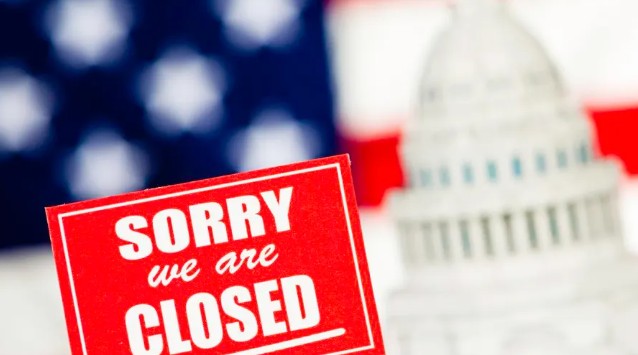U.S. Government Shutdown 2025: A Deep Dive into International Trade Functions
I. The Shutdown’s Ripple Effect on Trade
The 2025 U.S. government shutdown, triggered by a prolonged budget impasse in Congress, has cast a wide shadow over federal operations. While many domestic programs have paused, international trade functions are governed by a complex matrix of essential services, statutory mandates, and discretionary programs. For manufacturers, brokers, and compliance professionals, understanding which functions remain active and which are frozen is critical to maintaining operational continuity and avoiding costly missteps.
Did You Know?
The U.S. government has experienced more than 20 shutdowns since 1976, but CBP has remained operational in every one due to its classification as a national security and revenue-generating agency.
II. U.S. Customs and Border Protection (CBP): The Backbone Still Standing
CBP is the cornerstone of international trade enforcement and facilitation. During the shutdown, it continues to operate at full capacity. All tariff collection, cargo release, and entry processing functions remain active. The Automated Commercial Environment (ACE) is fully online, allowing importers and brokers to file entries, post-summary corrections, and duty drawback claims without interruption. CBP’s Centers of Excellence and Expertise (CEEs) are staffed and reviewing classification, valuation, and compliance submissions.
However, discretionary services such as binding ruling requests, non-critical audits, and outreach programs may be delayed. Importers relying on informal guidance or pending rulings should prepare for longer wait times and consider alternative classification strategies.
Did You Know?
CBP collects over $90 billion in duties, taxes, and fees annually making it one of the largest revenue-generating agencies in the federal government.
III. Department of Commerce: Partial Paralysis in Licensing and Trade Policy
The Department of Commerce houses several key trade-related bureaus, including the Bureau of Industry and Security (BIS) and the International Trade Administration (ITA). BIS continues to process emergency export licenses tied to national security, but routine license applications, commodity classification requests (CCATS), and advisory opinions are paused. This can create bottlenecks for exporters dealing in dual-use goods or sensitive technologies.
The ITA, which oversees trade promotion, AD/CVD litigation, and industry engagement, is largely dormant. Trade missions, market access programs, and non-essential investigations are suspended. For manufacturers involved in active AD/CVD cases, deadlines may be extended or recalibrated, but uncertainty remains.
Did You Know?
The BIS maintains the Commerce Control List (CCL), which governs exports of everything from encryption software to aerospace components and even some fertilizers.
IV. Office of the U.S. Trade Representative (USTR): Negotiations Continue, But Quietly
The USTR plays a pivotal role in shaping U.S. trade policy and negotiating international agreements. During the shutdown, core functions tied to presidential authority such as treaty negotiations and tariff implementation continue. However, stakeholder engagement, public consultations, and non-essential diplomatic meetings are postponed.
This means that while high-level talks with trading partners may proceed, industry voices may be temporarily sidelined. Manufacturers relying on USTR feedback or advocacy should expect delays in correspondence and policy updates.
Did You Know?
The USTR is responsible for enforcing over 400 active trade agreements and preference programs, including USMCA, GSP, and WTO commitments.
V. Department of the Treasury: Sanctions Enforcement Survives, Refunds May Stall
The Treasury Department’s Office of Foreign Assets Control (OFAC) continues to enforce sanctions and maintain the Specially Designated Nationals (SDN) list. Emergency licenses and enforcement actions tied to national security are prioritized. However, routine license applications, compliance reviews, and non-critical correspondence are paused.
More importantly for manufacturers, Treasury disbursements including duty refunds and drawback payments approved by CBP may be delayed. While CBP processes claims, Treasury’s ability to release funds depends on staffing and available appropriations.
Did You Know?
OFAC’s SDN list includes over 12,000 individuals, entities, and vessels and is updated weekly, even during most shutdowns.
VI. Partner Government Agencies (PGAs): The Bottleneck in the System
Partner Government Agencies (PGAs) such as the FDA, EPA, USDA, and CPSC play a critical role in clearing regulated goods. During the shutdown, their operations are uneven. The FDA continues to inspect food and drug imports, prioritizing safety-critical shipments. The USDA maintains agricultural inspections for perishables and live animals. However, the EPA and CPSC have furloughed most staff, delaying chemical clearances and consumer product safety reviews.
This creates a chokepoint for importers whose goods require PGA release before CBP can finalize entry. Delays in permit issuance, exams, and advisory communications can lead to longer dwell times, increased demurrage fees, and missed delivery windows.
Did You Know?
Over 40% of all U.S. imports require clearance from at least one PGA making interagency coordination essential for smooth cargo flow.
VII. Federal Aviation Administration (FAA): Safety First, Everything Else Later
The FAA continues to operate its safety-critical functions, including air traffic control, aircraft registry, and emergency communications. For international trade, this means that air cargo flights remain operational and safe. However, non-safety functions such as rulemaking, facility upgrades, and background checks are paused.
Manufacturers relying on FAA certifications or approvals for aerospace components may face delays. Exporters of aircraft parts should verify whether their shipments require FAA documentation and adjust timelines accordingly.
Did You Know?
The FAA oversees more than 5,000 public-use airports in the U.S. and its air traffic controllers manage over 45,000 flights per day, even during shutdowns.
VIII. Export Filings and Duty Drawback: Filing Continues, Payments May Lag
AES Direct, the system used for electronic export filings, remains fully operational. Exporters can continue to file Electronic Export Information (EEI) and receive confirmation numbers for compliance. CBP also continues to process duty drawback claims, including direct identification, substitution, and manufacturing drawback.
However, as noted earlier, Treasury disbursements may be delayed. Importantly, the statutory 5-year claim window for drawback remains active it is not paused due to the shutdown. Manufacturers must continue to file timely claims to preserve eligibility, even if payment is deferred.
Did You Know?
Drawback claims can recover up to 99% of duties paid and, in some cases, even MPF and HMF making it one of the most powerful cost-recovery tools in trade.
IX. Strategic Recommendations for Manufacturers and Brokers
To navigate the shutdown effectively, manufacturers should adopt a proactive strategy. First, continue filing all claims, entries, and corrections through ACE to preserve statutory timelines. Second, monitor Treasury disbursement status and communicate with brokers to track refund queues. Third, consider using bonded warehouses or Foreign Trade Zones (FTZs) to delay duty payment and preserve flexibility.
Documentation is key maintain audit-ready records for all imports and exports, including commercial invoices, bills of lading, AES filings, and inventory logs. Finally, subscribe to CBP’s Cargo Systems Messaging Service (CSMS) and PGA alerts to stay informed of operational changes.
Did You Know?
Foreign Trade Zones allow goods to be stored, assembled, or manufactured without triggering duty payment until they enter U.S. commerce a powerful tool during regulatory delays.
X. Summary Table: Agency Status Snapshot
Active:
CBP- Tariff collection, cargo release, drawback – Active
USTR – Negotiations, tariff implementation – Active
FDA – Food/drug clearance – Active
FAA – Safety oversight – Active
Reduced:
BIS – Emergency licenses, enforcement – Reduced
OFAC – Sanctions enforcement – Reduced
USDA – Agricultural inspections – Reduced
Closed:
ITA – AD/CVD litigation, trade promotion – Closed
EPA – Chemical clearance – Closed
CPSC – Product safety – Closed

